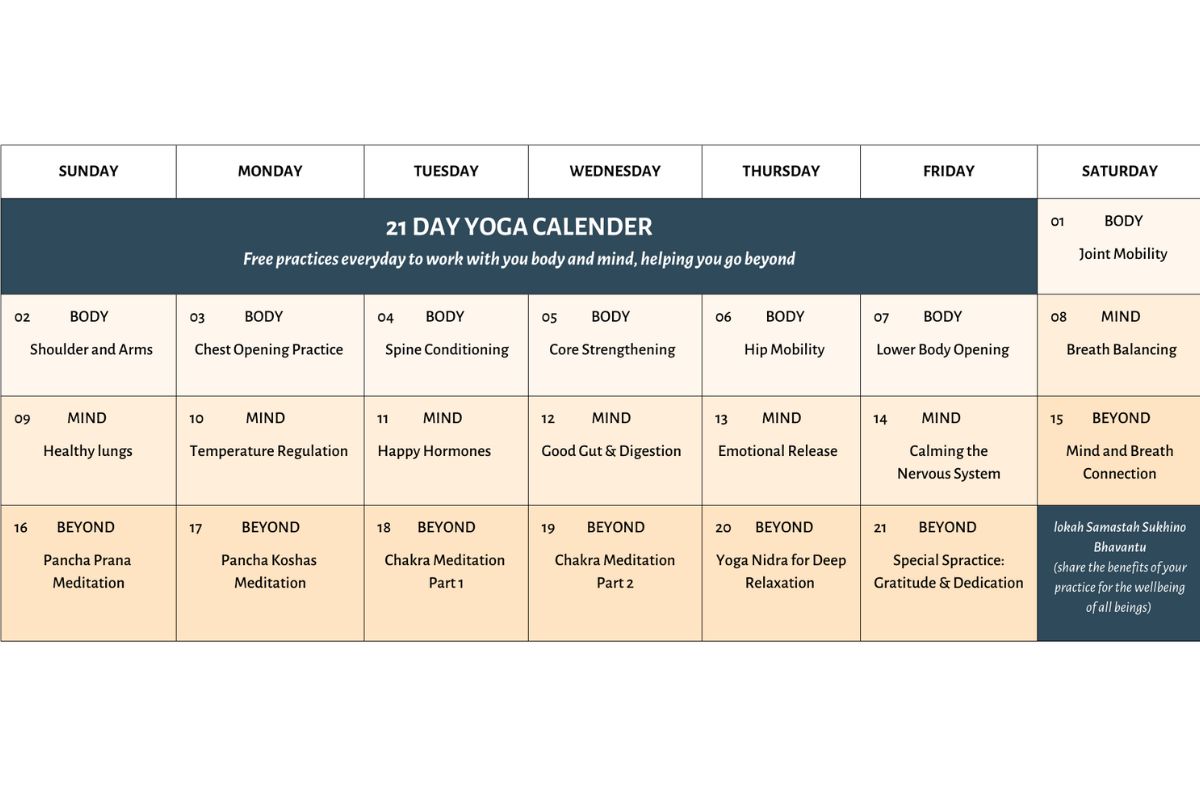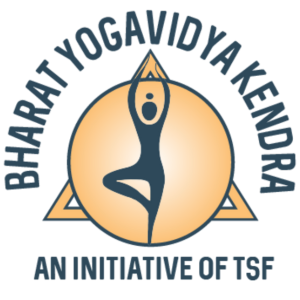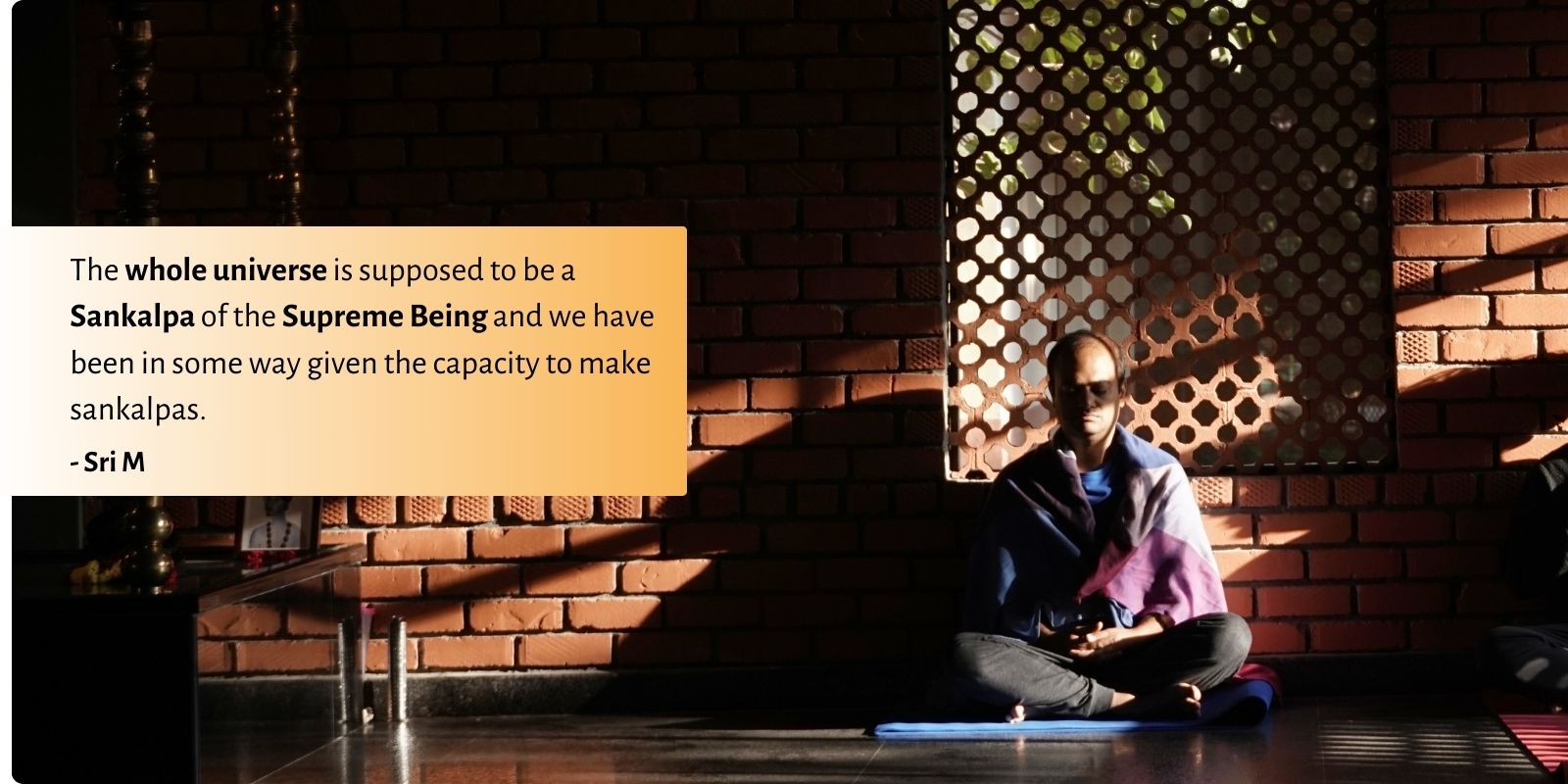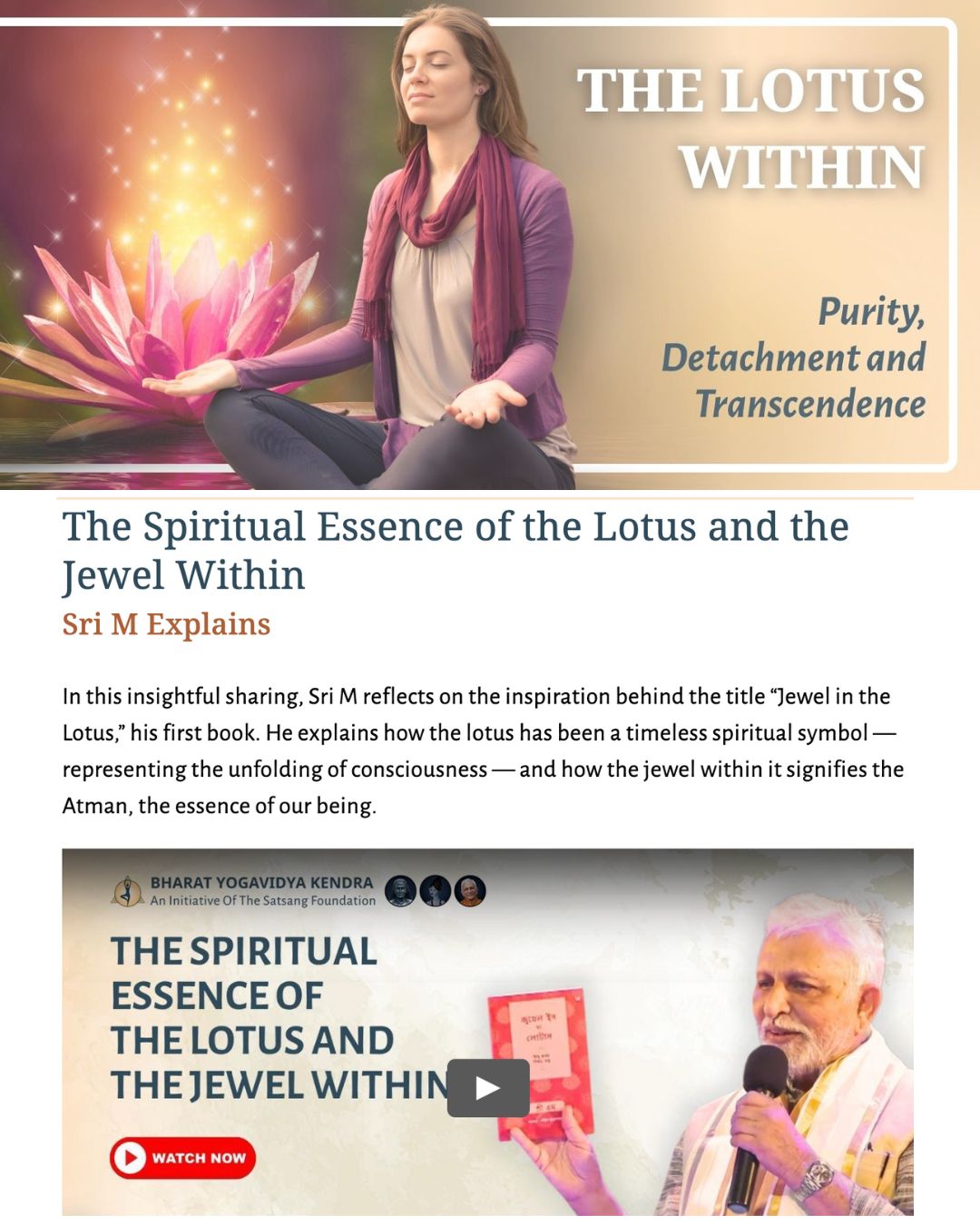Sankalpa:
Planting the Seed of Intention
Welcome to the latest edition of Yogavidya, where we focus on the power of Sankalpa. This simple yet profound concept holds the essence of focused intention. It’s like a seed planted in the fertile soil of your mind, ready to grow into something beautiful and purposeful.
In everyday life, we often feel the pull to make a change or seek growth. Maybe it’s the Sankalpa to read this newsletter fully and gain wisdom or the Sankalpa to return to your yoga practice after a long break. Perhaps it’s the intention to deepen your practice and spend 5 more mins in your sadhana.
A Sankalpa isn’t just an abstract wish; it’s a commitment that resonates with your heart’s deepest desire. It’s a sacred vow—a promise to yourself. especially during challenging times.
Once you set this intention, it serves as your compass, keeping you on track. So even when it gets hard and you are faced with resistance, the Sankalpa keeps whispering to you: “Take just one more step.”
In this edition, we offer stories, guidance, and practices to help you set and nurture your Sankalpa. We share how setting a small but heartfelt intention can guide your journey—whether you’re seeking to reconnect with your practice, try new forms of meditation, or just bring more joy into your life.
Our Sankalpa for this issue is for it to be a guide, to make you think and perhaps inspire to plant a seed, and leave you with some tools to water it with consistent action.
May your Sankalpa guide you well.
With you in this journey,
BYK Team
Sri M Explains
Sri M talks about Sankalpa—a rare human ability to imagine and visualize, he says “what you visualize, that you become.”
Where does reality begin, and how does Sankalpa differ from mere projection? Is this quality necessary, and what makes it crucial in guiding your life?
Learn about the potential pitfalls to avoid and how to use this power to your advantage, all while staying rooted in your values. Watch this short video to ponder upon Sri M’s wisdom on Sankalpa
Talk with M
BLOG POST
The Power of Sankalpa

Being born in the human form is a blessing. Humans are endowed with rare qualities to help them discover their true Self. Sankalpa is one such attribute. The Blog will try to shed light on this powerful tool.
एकोहम बहुस्याम
Ekoham Bahusyam
The Chandogya Upanishad mentions the Sankalpa of Brahman – I am one, I willed to become many.
The word “Sankalpa” is derived from the Sanskrit words “San,” which means a connection or union, and “Kalpa,” which refers to an intention or vow. Together, these two words form the essence of what a Sankalpa represents – a powerful statement of intent that connects us to our true desires and goals.
A Sankalpa is more than just a resolution or goal-setting exercise. it is an affirmation that aligns our thoughts, actions, and beliefs with our deepest aspirations. It is a desire backed by right intentions – that are focused, meditative, benevolent & inclusive.
Sankalpa is the seed and the subconscious mind the sub soil. Once the seed is planted and followed by necessary action the universe helps overcome the obstacles and guides you towards its fulfilment. Faith and the combined energy of Guru – Shishya help in harnessing this ….. (click learn more to continue reading the blog)
BOOK REVIEW
Sankalpa in Life and in the Face of Death

The word ‘Sankalpa’ instantaneously reminds one of the Sannyasin’s words, “I do not want Mukti. As long as there shall be one soul left, I have to come again and again”. This encapsules the journey of Swamiji’s life and death shared in this volume.
Though the content is culled out of different publications, it is autobiographical in narration, sharing his musings and messages. It is compiled so painstakingly that only the inverted comas give away the fact that the author is being quoted verbatim from another source.
After a brief account of Narendra’s birth and boyhood, this book shares the life journey that is coloured and is inseparable from that of his master – Sri Ramakrishna. His being is shaped and dissolved in the ‘lila’ (divine play) of the Paramahamsa. The touching accounts of Narendra uniting other ‘chosen ones’ in the fold of Sanyasa and their years of struggle and service, living the new meaning of Sanyasa and Gerua (ochre robe) given by Sri Ramakrishna, tugs at the heart of every reader. It must have inspired sankalpa of Sanyasa in many a heart.
The Shloka from Kathopanishad – Uttishtha Jagrata Prapya Varannnibodhata, was his call to his fellow beings both in the West and the land of his birth. His speech in the World Parliament of Religions led to the path of service of carrying the wisdom of the rishis to the West, followed by setting up the order of Ramakrishna Mission, inspiring them to serve the Daridra Narayana – the divine in the form of the poor.
The last chapter of the book – “The Last Days”, shares Swamiji’s reflections in the face of failing health. His dear Master had shared that “Naren” will not live to see the 40th year. It was the unspoken fear lurking in the hearts of his fellow travelers. Swami ji was calmly preparing to embrace it in all its beauty. Reading his words here brings such calm and reverence for the one who lived his Sankalpa to its last letter!
“It may be that I shall find it good to get outside of my body – to cast it off like a disused garment. But I shall not cease to work! I shall inspire men everywhere, until the world shall know that it is one with God.” These words on nearing his death, sums up the embodiment of his Sankalpa in life and in the face of death.
(Book review -Swami Vivekananda: On Himself, PP 353, Fifth Edition, 2020, Publisher Advaita Ashram, Mayawati)
ASANA/ MUDRA GUIDE
Sankalpa Mudra

Sankalpa mudra is a hand gesture used either during meditation, contemplation or asanas to enhance the effect of a sankalpa or intention.
It also conduits deep-rooted intentions and commitments when performed during Brahmacharya Sacred Ceremony known as Sandhyana Vandhanam.
Like all mudras, sankalpa mudra provides an energetic seal. In this case, the mudra is said to connect the left and right sides of the brain, uniting the body, mind and spirit in cooperative action to bring about change. Energy stored in the body is thought to be released when the seal is made. Once the hands are in position, the mudra can be held with a sense of stability and contentment.
How to Perform Sankalpa Mudra
- Sitting in any meditative pose place the left hand with palm facing up on the right thigh or knee.
- The right hand covers the left with the palm facing downwards.
- Clasp the hands together. As such, the fingers of both hands should rest naturally together.
- The elbows are relaxed in beside the rib cage.
- Maintains a calm but alert posture.
- You can rest your gaze forward at any point or follow the practice with closed eyes.
- Relax your jaw and meditate in Sankalpa Mudra for 6-8 breaths or as per capacity.
- One can interchange the hands, left over right or right over left, as per your comfort.
- Hold the mudra only for as long as it is comfortable otherwise it will become a distraction.
Benefits
- Enhances the effect of any sankalpa or resolution
- Brings about a sense of calmness and tranquility.
- Improved connection between the right and the left side.
- Helps release negative thoughts and set positive goals.
- Help practitioners progress toward higher limbs of yoga
Contraindications – none and it is extremely to safe to practice.
YOGA RESOURCE:
Shiva Sankalpa Suktam
Shiva Sankalpa Suktham is a hymn from the Rig Veda comprising six verses focused on fostering auspicious thoughts. The hymn emphasizes guiding one’s mind toward noble goals, promoting clarity and purity in intentions, and aligning thoughts with positivity. By invoking the divine, it inspires a disciplined mind and a focused will that contribute to spiritual growth and the well-being of all beings.
To listen to the Suktam, click below
Text Reference from Swami Tejomayananda, Divinising the Mind- Siva sankalpa suktam, Central Chinmaya Mission Trust, Mumbai, 2013)
Alumni Creative Showcase

Featured above is Kavitha Abhilash’s artwork. She is a dedicated student of jewelry CAD, a homemaker, a passionate yoga practitioner, and a committed spiritual seeker. Drawing has been a lifelong love that lets her lose herself in creativity, capturing the beauty of nature in small, vivid snippets on paper.
Her joy lies in bringing out the intricate details of each subject through color. Every new piece is a journey that begins with a mix of excitement and concern. The appreciation and criticism she receives fuel her growth, and each creation deepens her understanding of the world around her.
Ayurvedic Wisdom
Sankalpa in Dinacharya: Cultivating Daily Intentions
Dinacharya, derived from ‘Dina’ (day) and ‘Acharya’ (activity/behavior), is a profound Ayurvedic concept aimed at syncing our daily lives with our natural circadian rhythms to promote overall well-being. This routine is more than just a schedule; it’s a way to deepen our connection with nature and balance our doshas—Vata, Pitta, and Kapha—through carefully timed activities. Here’s how integrating Sankalpa, or focused intention, enriches this daily practice:
- Intentional Awakening: Rising during Brahma Muhurta (just before sunrise) enhances the sattva quality in us, setting a serene tone for meditation and intention setting.
- Mindful Cleansing: Practices like oil pulling and nasal administration (Nasya) not only cleanse the body but also clear the mind, reaffirming our daily intentions.
- Conscious Nourishment: Aligning meal times with the peak periods of digestive fire, particularly a substantial lunch during Pitta time, supports both physical health and mindful eating practices.
- Purposeful Activity: Incorporating exercise and self-massage (Abhyanga) as per the body’s energy cycles not only revitalizes the body but also reinforces the resolve for self-care and discipline.
- Restorative Sleep: Ending the day with practices that calm the mind, such as light meditation or reading spiritual texts, ensures our actions throughout the day align with our Sankalpa for peace and rejuvenation.
By embedding Sankalpa into each aspect of Dinacharya, we not only nurture our physical health but also cultivate mental clarity and spiritual awareness, guiding us towards a more disciplined, peaceful, and purposeful life.
SPOTLIGHT OF THE MONTH
Celebrating International Day of Yoga with a 21-Day Yoga Journey

Join us for a transformative 21-Day Yoga Journey, beginning on June 1st and culminating on International Day of Yoga, June 21st. This guided journey is designed to cultivate the practice of daily yoga for a healthy body and mind within a supportive community. Register to be part of a group where we’ll keep each other accountable, share progress, and encourage personal growth by witnessing and celebrating our unique stories.
- Days 1 to 7: Prepare the body through focused one-hour sessions covering joint mobility, spine conditioning and more.
- Days 8 to 14: Transition to Mind-focused practices that enhance mental balance, restfulness and clarity.
- Days 15 to 21: Go beyond with sessions exploring Hum Sau, chakra meditations, yoga nidra, guided relaxation & more.
Register and we will reach out to you with more info, a dedicated WhatsApp group and a downloadable yoga calendar.
Did You Know?
Did You Know? Sankalpa is a firm intention (San meaning “connection”), while Vikalpa involves illusion or misperception (Vi meaning “separation”).
Q&A CORNER
Yoga Experts Answer
Q: I would like to know if restorative yoga is right for menopause. I am struggling with heavy breathing, blood loss and restlessness.
Restorative practice includes gentle postures, pranayama and meditation. These will help settle the hormonal fluctuations and emotions that can go haywire during menopause and also provide comfort to the body.
Q: Which course (path) fits beginners who know nothing about Yoga? I am of age 56 years.
It is never too late to start one’s Yoga journey. Depending on the health conditions, inclination and interest ,one can choose from a beginner yoga abhyasa class to mantra chanting to a gentle restorative yoga. The options are plenty. You can call for more information.

Thank you for reading
In this issue of Yogavidya, we have:
- Sankalpa:
Planting the Seed of Intention - Talk with M
- The Power of Sankalpa
- Sankalpa in Life and in the Face of Death
- Sankalpa Mudra
- Shiva Sankalpa Suktam
- Alumni Creative Showcase
- Sankalpa in Dinacharya: Cultivating Daily Intentions
- Celebrating International Day of Yoga with a 21-Day Yoga Journey
- Did You Know?
- Yoga Experts Answer
- Yogavidya | BYK Monthly Newsletter







